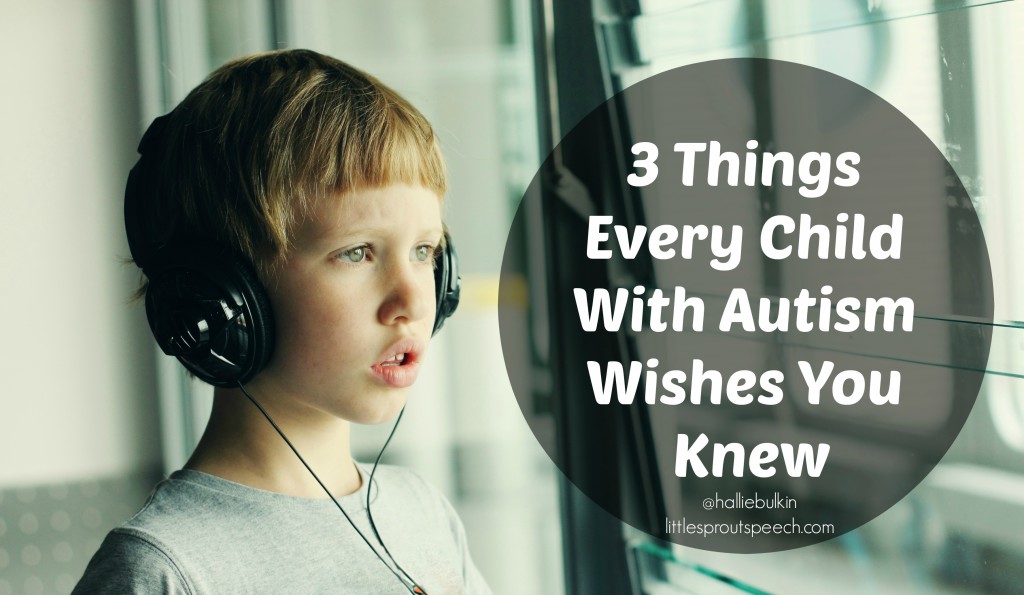Today we focus on 3 things that every child with autism wishes you knew AND tips for how to help them succeed based on these 3 topics. Here’s to increasing acceptance AND awareness, not just in April but YEAR ROUND!
#1: Avoid asking your child to make eye contact. Asking a child to make eye contact if they don’t naturally do it, is at times physically painful for a child. Temple Grandin explains that it feels like someone is stabbing her eyes out. Not a pleasant feeling or description, huh?
SO what can you do instead? Ask your child to “look at my nose”. They will appear to be looking you in the face but it will be more comfortable for them since they are focused on your nose and not your eyes. Keep in mind, however, that some children think better when looking away, so if it appears to impact your child’s communication abilities or thought process, I wouldn’t ask them to look your way at all when communicating!
#2: Some children need stimulation from outside of their body. Many of us are able to get stimulation from within our bodies and this means that things in our system are regulating themselves and helping us to stay in a happy and content place. Unfortunately, there may a little glitch in your child’s system and they may not be getting enough stimulation from within. If this is the case, then they need to get stimulation from the outside world.
So how do you manage this? Children with sensory needs tend to respond well to deep pressure and heavy work. This means they like big squeezy hugs, weighted vests, tight wraps that fit around the whole body, pushing or carrying the full laundry baseket and more! This is a great topic to discuss with an Occupational Therapist to learn more about how you can help your child. But the main point here is that if your child is not getting enough input on the inside, we need to help them get it from the outside world!
#3: Children with autism think in pictures! Temple Grandin (can you tell I love her!) compares her brain to google images. She explains that when she thinks of a topic she pulls it up on image format in her brain (just like the way it would look for you and I if we went to google images and searched for a certain topic). For a child who may not excel with language, they will not be able to express this to you.
So what can you do? Since MANY children (not just children who think in images) respond well to pictures (pictures are a universal language), start using pictures with your child to help them communicate. For example, you can give your child 2 picture choices to choose from to help them tell you/choose between what they want and don’t want.
I hope you find these 3 tips helpful for you! Sharing these tips with clients of mine has totally changed the way they communicate and interact with their child. Always for the better. Make your life easier and give these tips a try TODAY!

